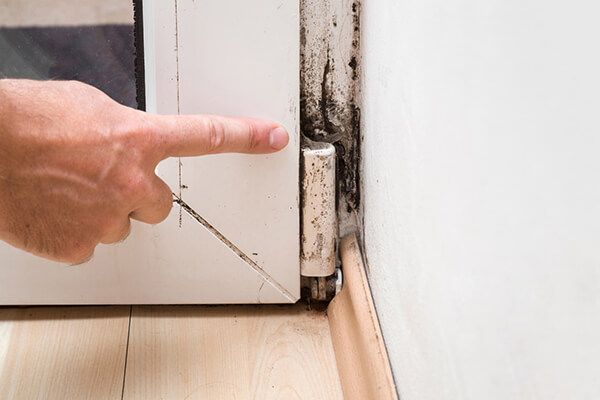Your Ultimate Overview to Blog Post Mold And Mildew Removal Strategies
Browsing the world of post-mold removal methods is a careful procedure that demands focus to detail and an extensive understanding of the ins and outs involved. In the consequences of mold and mildew problem, knowing exactly how to successfully eliminate the mold and avoid its reoccurrence is extremely important for keeping a healthy interior atmosphere. From choosing the right cleansing and disinfecting methods to applying strategies for long-term mold and mildew prevention, each action in the removal trip plays an essential duty in guaranteeing an effective result. As we start this exploration of post-mold remediation methods, we will uncover the essential techniques and finest practices that can aid you restore your room to its pre-mold problem and guard it against future mold dangers.
Understanding Post-Mold Removal Process
After finishing the mold and mildew removal process, it is crucial to understand the post-mold remediation methods that are needed to ensure a efficient and detailed clean-up. When the mold and mildew has actually been removed, the following action entails cleansing and disinfecting the impacted areas to stop any kind of regrowth of mold and mildew. This includes making use of specialized cleansing agents to clean down surface areas and eliminate any kind of continuing to be mold spores. It is vital to dry out the location completely to inhibit the development of mold in the future (Post Mold Remediation Report). Correct air flow and dehumidification can help in this process.
In addition, performing a final inspection post-remediation is important to make certain that all mold has actually been successfully gotten rid of. If the examination exposes any lingering mold, added remediation might be necessary.
Reliable Cleansing and Sanitizing Approaches

Avoiding Future Mold Growth

Value of Proper Air Flow
Proper air flow plays a crucial role in avoiding moisture build-up, an essential factor in mold and mildew growth within interior environments. Reliable ventilation systems aid eliminate excess moisture from the air, decreasing the opportunities of mold and mildew spores finding the dampness they need to spread out and germinate. Without ample ventilation, interior spaces can end up being a breeding ground for mold and mildew, resulting in possible health risks and architectural damage.
By ensuring appropriate air blood circulation, ventilation systems can additionally assist in drying wet areas quicker after water damage or flooding events, further preventing mold and mildew development. Post Remediation Inspection near me. In rooms like washrooms, basements, attics, and kitchen areas where dampness degrees tend to be higher, setting up and preserving efficient ventilation systems is important in protecting against mold and mildew problems

Tracking and Maintenance Tips
Provided the important function that proper air flow plays in protecting against mold and mildew development, it is imperative to establish efficient surveillance and maintenance suggestions to make sure the continued functionality of air flow systems. Regular examinations of air flow systems ought to be performed to inspect for any indicators of blockages, leaks, or malfunctions that can impede appropriate airflow. Surveillance humidity degrees within the residential or commercial property is also crucial, as high moisture can add to mold and mildew growth. Mounting a hygrometer can help track moisture levels and sharp house owners to any spikes that might require attention. In addition, making sure that air filters are on a regular basis cleaned or changed is vital for preserving the efficiency of the ventilation system. Applying a routine for routine maintenance jobs, such as duct cleansing and a/c system examinations, can assist stop problems prior to they rise. By remaining proactive and alert to the problem of air flow systems, residential or commercial property owners can efficiently minimize the threat of mold regrowth and preserve a healthy and balanced interior environment.
Conclusion
In final thought, post-mold remediation techniques are important for guaranteeing a secure and tidy setting. Comprehending the process, carrying out efficient cleaning and decontaminating techniques, avoiding future mold and mildew development, preserving proper air flow, and regular surveillance are all crucial action in the remediation process. By following these standards, you can efficiently eliminate mold and mildew and stop its return, functioning or promoting a healthy and balanced living room for all passengers.
In the results of mold and mildew infestation, recognizing just how to effectively eliminate the mold and mildew and avoid its reoccurrence is critical for maintaining a healthy and balanced indoor atmosphere. Once the mold has actually been gotten rid of, the next action involves cleaning and decontaminating the influenced locations to prevent any type of regrowth of mold and mildew - what to do after go mold remediation. After eliminating noticeable mold development, it is essential to cleanse all surfaces in the affected location to eliminate any remaining mold spores. To even more improve mold and mildew avoidance measures, it is necessary to resolve underlying issues that at first led to mold and mildew growth.Offered the critical duty that appropriate air flow plays in avoiding mold growth, it is important to establish efficient surveillance and upkeep suggestions to make certain the continued functionality of air flow systems
Comments on “Support on What to Do After Mold Remediation”